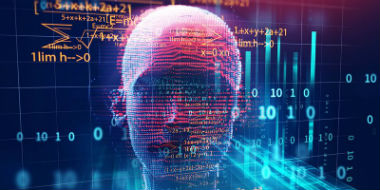Cloud Computing
The Internet of Things – Changing the Way We Live
September 6, 2016 | Written by: Harriet Green
Categorized: Cloud Computing | IBM Watson | Internet of Things
Share this post:
We live in an age of immense technological and social change, much of which has been brought about by the emergence of advanced technologies such as cognitive computing, the Internet of Things and robotics. In fact, the current pace of change and the potential for further transformation is so great that many see this as the fourth industrial revolution.
During my keynote at the IFA consumer electronics show in Berlin this week, I talked about how these technologies, all of which are powered by cloud computing, are changing the way we live, work, produce and consume – disrupting many of our existing models for business and innovation.
Billons of sensors are improving our relationship with the physical world. We are giving objects eyes and ears, so they can sense and interact with us better. As a result our relationship with buildings, cities, cars, devices and appliances are being transformed.
The challenge is that over next few years, the Internet of Things will become the biggest source of data in the world. That’s where IBM’s Watson cognitive computing comes in. Watson uses machine learning and other techniques to understand this data and turn it into insight which can help automate certain tasks, enable manufacturers to design better products, innovate new services and enable humans to make better decisions.
I’m extremely excited about what we can achieve across so many areas of our lives, but I think it’s especially exciting to look at how IoT will impact our lives at home – the focus of my keynote at IFA for which I was joined by some of the biggest names in consumer tech who spoke about how Watson’s cognitive intelligence is driving innovation in their companies.
A recent McKinsey study estimated that the value of people’s time spent doing domestic chores is around $11 trillion today and is expected to climb to over $23 trillion by 2025.
That is staggering. IoT-enabled smart home ‘orchestrators’ have the potential to streamline how we manage the home and all the tasks and chores within it. With natural language interfaces, access to all historical home usage data and machine learning features, these orchestrators can truly change how we manage our homes and related home activities.
But this is not easy. To enable the shift, some of the biggest names in consumer technology are turning to IBM to help transform their goods and services. For example, Whirlpool’s Norbert Schmidt joined me on stage to talk about how his company is using IBM’s Watson IoT platform to help deliver superior customer service by enabling its home appliances to connect with one another and to their users – opening up a new era of man-machine partnership in the home with better results for all.
We also heard from Panasonic’s David Tuerk about how it is exploring how Watson’s unique machine learning and natural language processing capabilities can help transform the services it provides to consumers – giving them greater peace of mind knowing that their homes are comfortable, safe and secure.
One of the areas in focus is home safety and security where Panasonic’s security cameras and sensors to detect movement, glass breakage, door and window opening, will be coupled with Watson’s cognitive computing capabilities. Thanks to video analytics, a home security system would know not to react if the neighbours’ children are just fetching their football, but will automatically alert the police or security services if likely intruder tries to scale a fence to enter the property.
I also spoke about how we are working with ‘hearable’ pioneer Bragi to take the IoT directly to the ear. Bragi has innovated new generation smart earphones which are some of the world’s most powerful micro-wearable computers with 27 unique sensors that can measure a user’s vital signs while augmenting their communications and interactivity.
With Kickstarter funding, Bragi has already successfully launched The Dash onto the consumer market for sport and recreation. Now with Watson cognitive intelligence and natural language processing, Bragi’s new ‘hearable’ technologies are posed to transform the way we interact with our devices, the way we communicate with each other and the way we work together.
More connected homes are safer homes – especially for the young and elderly. We are in the midst of one of the largest demographic and technological shifts in the history of humanity. Our elderly population is expected to become the largest single age segment in the world by 2050. Our ability to create better outcomes for them, while letting them live independently at home, is better for patients, caregivers, family, loved ones and health providers as well.
At IFA we heard from Nokia’s Cedric Hutchings about how his company is exploring opportunities to integrate IBM Watson IoT with Nokia’s wearables and smart devices for home care. Their goal is a system that helps to detect and alert caregivers to potential problems such as: deviation from daily routines, abnormal vital signs and sudden changes in the home environment. Voice activated interfaces in the home will be able to take simple commands (such as ‘call an ambulance’) and offer reminders to take medicines or turn off appliances.
I hope those who watched my IFA keynote left with a powerful sense of excitement about how exciting new technologies like the Internet of Things and cognitive computing are enabling such an incredible period of rapid technological change. I hope that I, along with my friends from Whirlpool, Panasonic and Nokia, managed to convey the great opportunity we have before us to enhance our relationship with the physical world making appliances, machines, devices, homes, cars and buildings better, safer, more intuitive and interactive.
The most exciting aspect of the Internet of Things is its pervasiveness and accessibility. The cost and complexity of sensors and computer processing have fallen to such an extent that these technologies are really helping to democratize innovation for companies of all sizes and for people in all places.
We have an incredible opportunity before us to our enhance lives, innovate new products and services and transform societies across the world. We just need to make sure we seize the opportunity and put humans in the driving seat of the transformation.

Former CEO & Chair of IBM Asia Pacific
AI in 2020: From Experimentation to Adoption
AI has captured the imagination and attention of people globally. But in the business world, the rate of adoption of artificial intelligence has lagged behind the level of interest through 2019. Even though we hear that most business leaders believe AI provides a competitive advantage, up until recently, some industry watchers have pegged enterprise adoption […]
In Telecom, Watson Assistant Grows 150% Year-Over-Year
Nobody likes the prospect of having to get on a computer or pick up a phone and reach out to customer service. Call centers in countries around the world are notorious for long wait times, poor service and high customer churn. In many call centers, even the best employees are forced to dig for answers […]
Watson Anywhere: The Future
(Part 3 in a Series) There’s a paradox in the world of AI: While it’s the largest economic opportunity of our lifetime (estimated to contribute $16 trillion to GDP by 2030), enterprise adoption of AI was less than 4% in 2018. A recent Gartner survey said that the 4% in 2018 has now grown to […]


